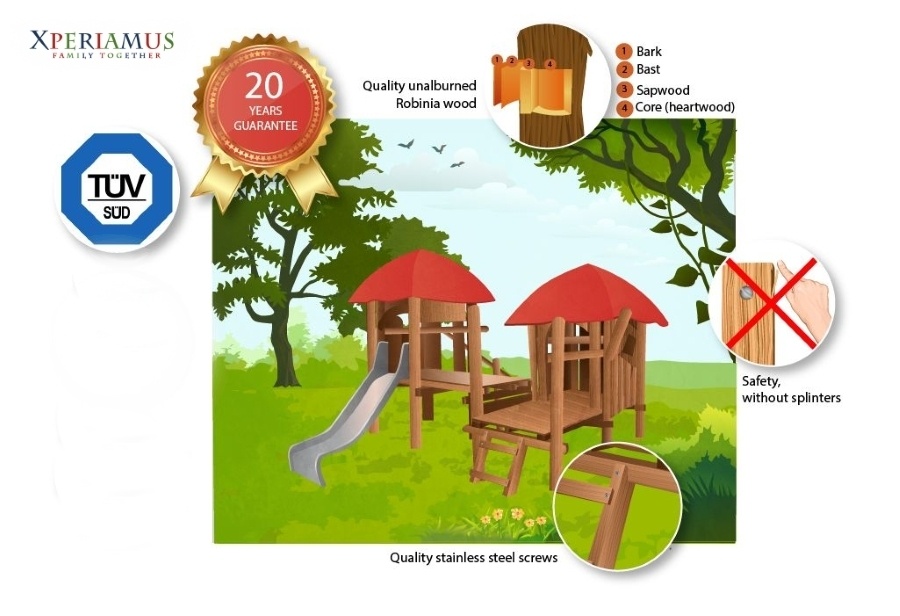Botanical name: robinia pseudoacacia
Another names: false acacia, black locust
The robinia tree is a deciduous plant belonging to the Leguminosae family native to the United States. It was imported to Europe (to Paris) in 1601 by the botanist Jean Robin. It seems that the specimen still present today in the René Viviani square is the original one; more than 400 years old. It is considered the oldest tree in Paris. Robinia was introduced because of its beauty to be used as ornamental tree. The extraordinary characteristics of this robinia tree wood were only discovered later.

About the tree
Robinia can grow up to 30 meters in height. The knot free trunk length comes to approx.10m. The diameter of the wood rests between 0.15-0.4m. Single trunks can reach a diameter of 0.8m, sometimes up to 1m. The trunks are often irregular, crooked, that is why the tree gets a low value from foresters.
Robinia wood characteristics
Robinia is the only wood that is categorized in resistance class 1 (DIN EN 350-2) compared to oak wood (resistance class 2) or pine wood (resistance class 4). The Robinia is a compact wood at 0.75 g/cm³ with wood humidity from 12 -15%. It is one of the heaviest of all used wood in Europe. Robinia can be used for outdoor structures without protective treatment, making it a great alternative to tropical woods. It is very heavy and considerably more solid than oak.
| Resistance class 1 | Resistance class 2 | Resistance class 3 | Resistance class 4 | Resistance class 5 | |
| Type of wood (European) | Robina * (770 kg/m3) |
Oak (675 kg/m3) |
Larch (575 kg/m3) |
Spruce (400-450 kg/m3) |
Poplar (350-385 kg/m3) |
| Pine (475 – 550 kg/m3) |
* Robinia pseudoacacia – in the U.S. it is known as black locust (original American name): https://www.wood-database.com/black-locust/
The density values are average values as there might be difference in different sources of information and different type of trees.
Because of its “unusual” growing characteristics it is difficult to get it in large amounts, but because of its good material qualities it can be used in many ways. In the past it was used as fencing posts. It can be used in situations where high mechanical demands and extreme environment conditions come together.
Hygroscopicity
Wood is a very hygroscopic material. This means in steady humidity the color changes in air. Wood humidity is the amount of liquid parts in the wood substance. It takes the form of water content. The ability to absorb and to release water content is a result of the capillary porous wood structure. This structural characteristic influences all physical and technical capacities of the wood. Hygroscopicity is also the ability of solid, capillary porous materials, to receive humidity from the surrounding air until repletion and to release it in drier conditions.
Expansion and contraction are the results of the changes in humidity. The inner cores of the wood expand and contract less than the areas in the outer core area. Fissures and cracks are the natural result of these changes. In comparison to the pine, spruces or oak, the Robinia has the lowest value of expansion.
Fissures normally do not reduce the quality of the timber. According to DIN EN 1176 they make no direct demand regarding the complexion and the character of wood fissures. They
do not see the wood cracks which result from the wood dehumidifying as problematic. Only, according to DIN 31 001, fissures can be graded. The mass >8 mm as a source of danger to fingers is counted only after a falling height of over 1200 mm. Below this height open fissures represent no danger.


